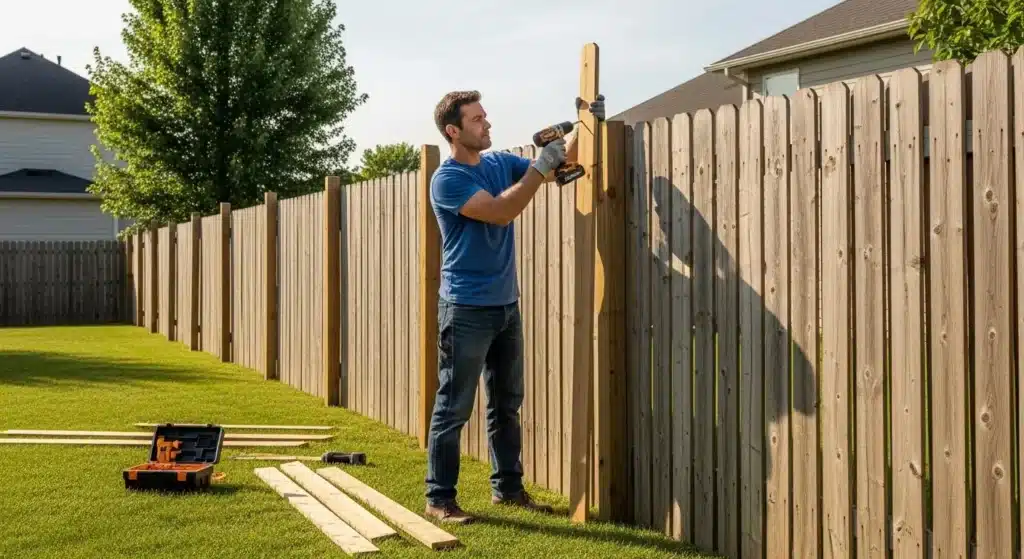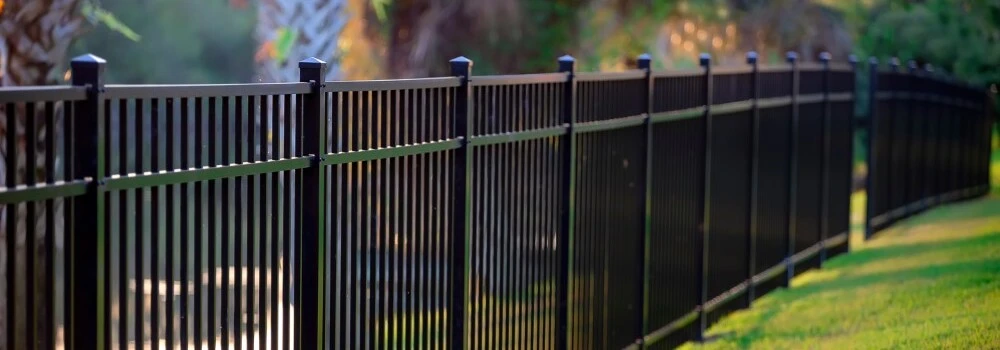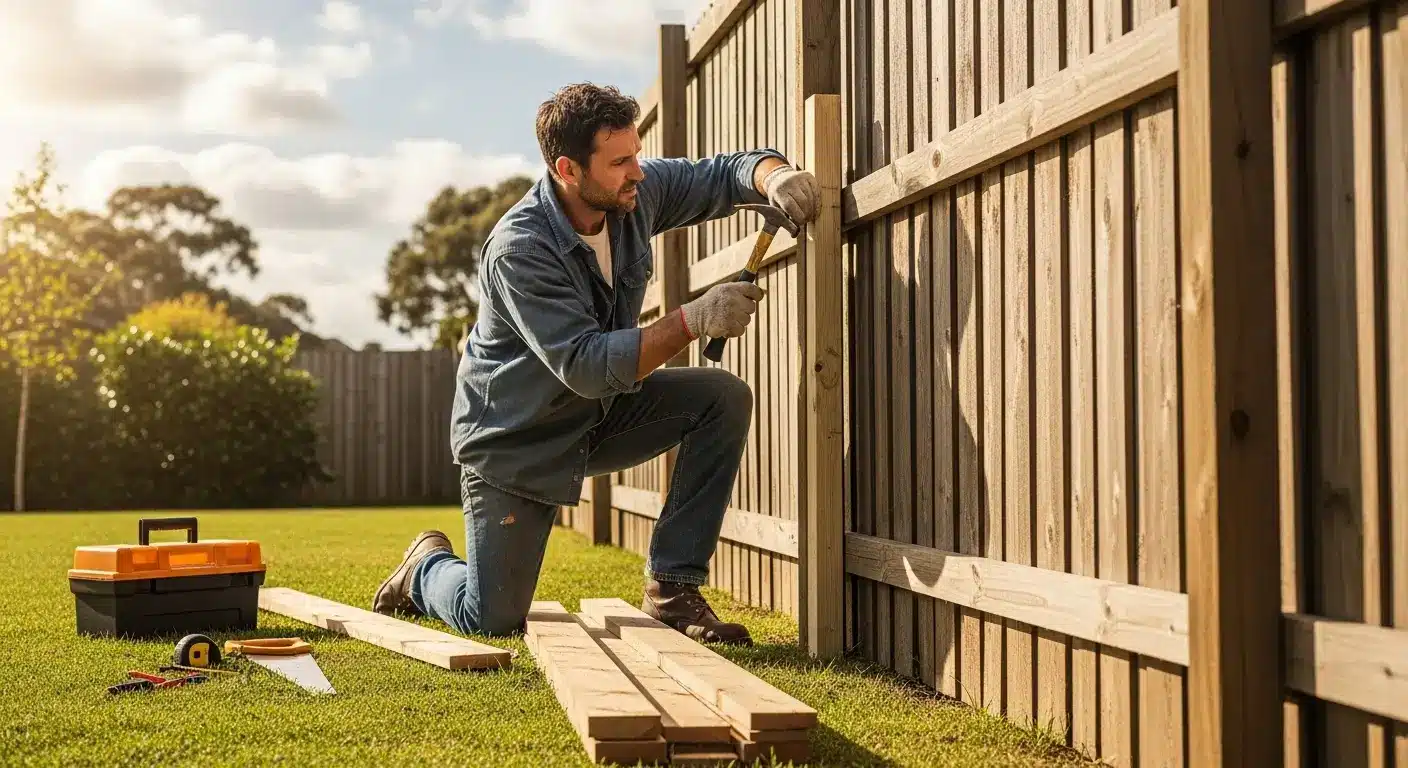
What is the Easiest Way to Extend the Height of a Fence?
Key Highlights
- A fence extension is a simple way to add height to chain link fence or any existing fence for more privacy.
- You can easily raise your fence height using post extenders that slide over your current fence posts.
- Adding a fence topper, like a trellis or lattice, offers both height and a decorative touch.
- Consider attaching additional boards or a privacy screen for a straightforward DIY project.
- Fence extenders work by being secured to your existing posts, creating a seamless and stable addition.
- Before starting, always check the condition of your fence to ensure it can support the new height.
Feeling like your backyard is just a little too open to the outside world?
If you’re looking to extend the height of a fence for better privacy, noise reduction, or a greater sense of security, the good news is: you don’t need to tear everything down and start from scratch. With the right tools, materials, and guidance, you can add height to a chain link fence or wooden fence and create a more peaceful, private outdoor space.
Whether you’re doing it yourself or need a helping hand, Bravo Fence Company is here to support your fencing project from start to finish. Let’s explore the smartest ways to give your fence the upgrade it deserves.
Essential Tools and Equipment Needed
Before you begin your DIY fence extension project, gathering the right tools will make the job much smoother. While the specific equipment depends on your chosen method, some basics are essential for any fencing task. You will likely need a drill, a tape measure, a level, and a hammer. For a chain link fence extension, you may also need tension bands, brace bands, and wire ties. Investing in quality tools ensures your installation is secure and long-lasting.
Don’t forget about safety gear. Always have safety glasses, work gloves, and sturdy footwear to protect yourself during the installation. Many chain link fence extenders and post extension kits are sold with the necessary hardware, such as galvanized screws or clamps, to attach the new pieces to your existing fence posts. These kits can simplify the process, providing everything you need in one package for a successful project.
Step-by-Step Guide to Extend the Height of a Fence
Wondering how to make chain link fence taller? Extending your fence is a manageable DIY fence project that can be broken down into a few clear stages. The process involves carefully evaluating your existing fence, choosing the right extending fence height ideas, and ensuring a secure installation. By following a structured approach, you can achieve a professional-looking result that adds both privacy and value to your property.
Whether you’re adding a simple topper or installing chain link fence extenders, each step is crucial for a successful outcome. The following guide will walk you through assessing your current fencing, selecting materials, installing the extension, and adding the final design touches.
Step 1: Assess Your Existing Fence Structure
The first and most important step is to take a close look at your existing fence. Before you make a fence taller, you must ensure your current fence structure is strong enough to support the extra weight and wind load. A weak or damaged fence could fail once the extensions are added, so a thorough inspection is essential.
Walk the entire length of your fence and check for any signs of wear and tear. Pay close attention to the fence posts, as they provide the main support. You should look for:
- Rust, rot, or other forms of damage on posts and panels.
- Weak or loose sections that need reinforcement.
- The overall stability of the structure.
If you plan to use chain link fence extenders, measure the diameter of your current fence posts to ensure you purchase extenders that fit perfectly. Making sure your foundation is durable and in good condition will guarantee your fence height extension lasts for years to come.
Step 2: Select and Prepare Fence Extenders or Toppers
Once you’ve confirmed your fence is in good shape, it’s time to choose how you’ll make your chain link fence taller or upgrade a wooden fence. There are several options for a fence extension, each with its own benefits. Post extensions are metal sleeves that slide over your existing posts, providing a seamless way to raise the overall height. These are especially common for a chain link fence extension.
Another popular choice is a fence topper. Toppers like a lattice or trellis not only add height but also introduce a decorative element. They are available in wood, vinyl, and metal, making it easy to find a style that matches your existing fence. For a wooden fence, adding more boards or a matching lattice topper is an excellent choice that creates a cohesive look. Many of these extenders and toppers can be found at home improvement stores or online retailers like Amazon.
Here is a quick comparison of common extension methods:
| Extension Type | Best For | Key Feature |
| Post Extenders | Metal or chain link fences | Slides over existing posts for a seamless height increase. |
| Lattice/Trellis | Wood, vinyl, or metal fences | Adds a decorative pattern and supports climbing plants. |
| Privacy Screens | See-through fences | Offers instant privacy and can be draped for extra height. |
| Additional Boards | Wood fences | Attaches directly for a uniform appearance. |
Step 3: Install the Extension Safely and Securely
With your materials ready, you can begin the installation. Safety should be your top priority during this DIY project. When attaching chain link fence extenders, the process is typically straightforward. You slide the extender over the top of the existing post and secure it firmly with the provided hardware, which is often self-tapping screws or clamps.
For any type of fence height extension, ensuring a secure fit is crucial for a durable result. Always use a level to make sure your extensions are perfectly vertical. An unlevel extension can compromise the stability of your entire fencing structure. Many DIY kits come with all the necessary fasteners, but always double-check that they are tightened properly.
After installation, give the extended section a gentle push to test its stability. You should inspect the following:
- Make sure all screws or clamps are tight and secure.
- Check that the extension is plumb and aligned with the existing fence.
- Seal any gaps with exterior-grade sealant to prevent water intrusion.
Step 4: Finishing Touches for Design and Privacy
After you make your fence taller, the final step is to add finishing touches that enhance its design and privacy. Raising your fence height will certainly improve privacy and security, but you can take it a step further by integrating attractive elements that blend seamlessly with your yard.
Using plants is a fantastic way to create a natural, living privacy screen. A trellis is perfect for this, as you can grow climbing plants like ivy or flowering vines. This softens the look of the fence and provides additional coverage. This popular DIY approach combines function with beauty.
Consider these other design ideas to make your taller fence look great:
- Paint or stain the extension to match your existing fence.
- Add decorative post caps for a polished, professional finish.
- Install outdoor lighting along the top of the fence to improve ambiance and security at night.
Conclusion
Extending the height of a fence doesn’t have to be complicated or costly, it just takes the right approach and a little planning. Whether you’re adding a decorative trellis, installing chain link fence extenders, or attaching extra boards, each method to make fence taller offers a practical way to enhance your outdoor space. With the steps outlined in this guide, you can boost both the function and appearance of your fence without a full replacement.
And remember, the success of your project starts with making sure your existing fence is strong enough to support the extension. If you’re not quite sure where to begin, or you’d prefer expert help to get the job done right, Bravo Fence Company is here to help. Our team brings years of experience and a commitment to quality craftsmanship to every project we take on.
Call us today at (770) 966-9970 or fill out our online form to schedule your free consultation.
Frequently Asked Questions
Can fence extenders be used with all types of fences?
Fence extenders are most commonly designed for metal and chain link fencing, as they can easily slide over existing posts. However, options are available for a wooden fence, such as attaching additional boards or using toppers.
What is the most budget-friendly way to add height to my fence?
Attaching a privacy screen or adding basic wooden slats can be very cost-effective. Some simple chain link fence extenders, which can often be found on Amazon, are also an affordable choice that requires minimal tools and effort.
Are there any legal limits to how high I can make my fence in Atlanta?
In Atlanta, local regulations dictate the maximum height for fences, which often differs for front and back yards. Before starting, it’s essential to check with Atlanta’s local planning department to understand the specific rules and see if any permits are required.
Will adding height to my fence affect my property value?
A well-executed fence height extension can positively impact your property value. Increased privacy and security are highly desirable features for many home buyers. As long as the design is attractive and the work is done properly without causing disputes with neighbors.
Are there local regulations or permits required for extending a fence?
Yes, you should always check local laws before altering your fencing. Many municipalities have specific regulations regarding maximum fence height and may require permits for construction. Contacting your local planning or building department is a crucial step.


